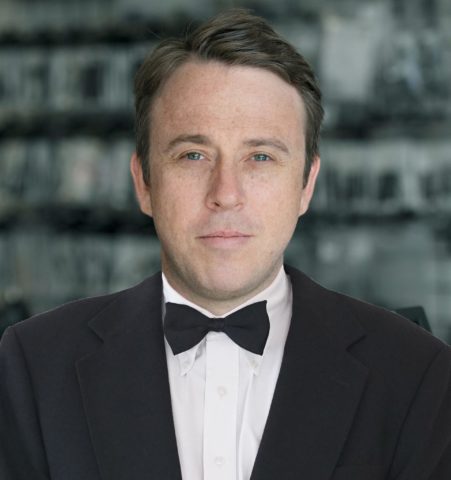Greg Smokler is Vice President of Cine Products at Teradek. You can read more about him and his colleagues at Teradek and Amimon who are getting Academy of Motion Picture Arts and Sciences Scientific and Technical Awards (plaques) on February 13, 2021 at 1 pm PT.
Greg Smokler grew up on film sets in Hollywood; early days involved working with his father, cinematographer Peter Smokler. Greg graduated with a BA from the University of Massachusetts Amherst in 2003. His career as a Local 600 Camera Operator was interrupted when Paralinx – the wireless on-set camera monitoring company he co-founded – was acquired by the Vitec Group. Today, Greg is responsible for Vitec’s Creative Solutions Cine business unit, which comprises Teradek, SmallHD, and Wooden Camera. Greg lives in Los Angeles, CA with his wife Marissa and twin sons Albert and Martin. Greg commented on his Sci-Tech Award:
Jon Fauer: Your Sci-Tech Award is inscribed and described: “…for the development of the ruggedized Teradek Bolt wireless video transmission system for on-set remote monitoring. The Teradek Bolt system features a frame-synchronized back channel for real-time camera control, an error-resilient timecode channel and integrated production metadata, which have led to its widespread adoption in motion picture production.” Can you please translate that? What is a frame-synchronized back channel?
Greg Smokler: The Bolt transmits the camera’s video wirelessly to a monitor. Before the Bolt, wireless video was really a specialty tool that was mainly used by Steadicam operators; it would be transmit over UHF radio to be viewed on a 3” black and white Sony Watchman. The Bolt for the first time brought extremely robust, long-range full HD wireless video to nearly every film camera on the planet.
The back channel on Bolt is a continuous bi-directional signal from the receiver back to the transmitter. It’s basically the receiver talking to the transmitter, saying the connection is still excellent, or “hey, the connection is bad; let’s change to a clear channel”
In his interview, why did Nicol say that you and Paralinx were arch rivals when you were separate companies?
Our two companies were definitely competing. When we started Paralinx in 2012, we were completely focused on how the professional camera crew would be using the gear, while I’d say, Bolt was more driven by engineering and technology.
What were the differences?
Bolt was superior technologically, and Paralinx was known for ergonomics and simplicity. Many Hollywood professionals chose Paralinx as a tool that fit seamlessly in the way they worked rather than the one with the highest specs. When we became part of Teradek in 2015, the spirit of Paralinx became part of the evolution of the Bolt product.
Give us examples please.
Paralinx had the ergonomic features that only camera people would really understand, like the intuitive way to mount to a camera, or pass-through battery plates that allow you to connect the receiver to a monitor—simple things that made life easier on set. Ultimately, once Paralinx became part of Teradek, the Bolt evolved as a synthesis of the two which enabled it to become even more popular around the world.
Wrap-up comment?
When I started my own company, I was still shooting small industrial commercials and music videos, while working on Local 600 camera crews. I had no idea that making these products would lead me on a journey into technology and design, and I certainly had no idea that we would ever be so lucky as to receive the honor of a Sci-Tech award. None of this would have been possible without the incredible hard work of my co-conspirator Tim Malooly and our SEAL Team of ex-Paralinx pirates, the leadership of Teradek founder Nicol Verheem, and the creativity of the Teradek Engineering team led by Dennis Scheftner, Richard Billett, and Marius Van der Watt.









